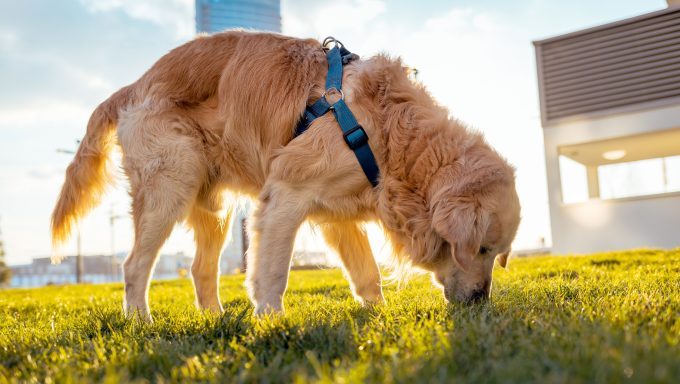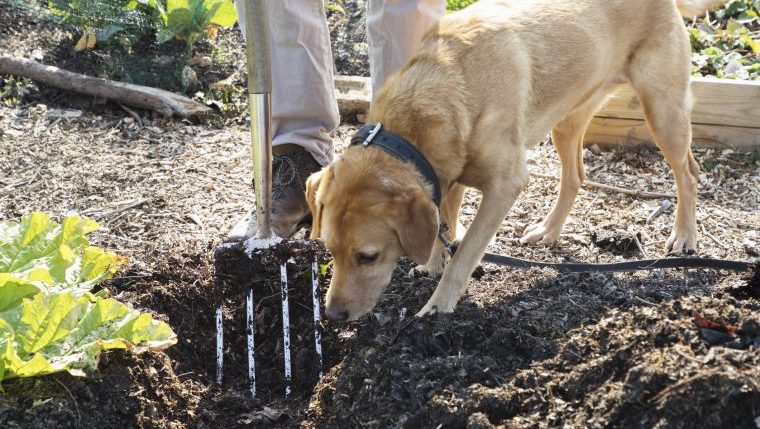
Conservation dogs, also known as detection dogs or conservation canines, are specially trained pups. Similar to other kinds of detection dogs, like those who sniff out bombs, drugs, or missing people, these pups find things of interest to conservation biologists. Therefore, they play a crucial role in protecting the planet by assisting in various environmental conservation efforts. These highly skilled canines are significantly impacting wildlife conservation, invasive species management, and habitat restoration. Their incredible abilities and keen senses help researchers, conservationists, and wildlife managers in their efforts to safeguard our planet’s biodiversity and natural resources. As Earth Day approaches, we’re going to take a deeper look into their work.
How are conservation dogs trained?
These pups often undergo rigorous training. According to K9 Conservationists, “The trick with a conservation detection dog is teaching the dog to search for a given target and ignore everything else.”
Training is a long, involved process, often involving positive reinforcement. First, a dog learns to search for food. Next, trainers introduce a “target odor,” like a plant or scat, in a container. When the dog’s nostrils flare as they’re smelling the substance, trainers use something like a clicker to reward the dog. The trainers introduce the same odor in more containers, and eventually, the dog learns to associate the odor with rewards. Next, trainers introduce olfactory distractions but only reward the target odor. The dog learns that a particular odor “pays.”
During training, dog owners ensure their pups receive proper diet, exercise, and veterinary care. By caring well for these pups, they are better able to perform critical tasks, which we’ll examine below.
Wildlife conservation
Wildlife conservation is one of the primary areas where these specialized dogs are making a difference. Because these remarkable pups learn to detect the scent of wildlife species, they can pick up the scent of endangered or elusive animals such as tigers, cheetahs, and elephants. By tracking scents and alerting their handlers, these dogs can help researchers locate and monitor wildlife populations without disturbing their natural habitats. By providing invaluable information, these dogs help humans understand animal behavior, population dynamics, and conservation planning. This knowledge then informs wildlife management strategies and policies.
Managing invasive species
Conservation dogs are also vital in managing invasive species, which significantly threaten native ecosystems. Invasive species like rats, snakes, and insects can wreak havoc on local flora and fauna, disrupt ecosystem balance, and threaten biodiversity. These canines can locate invasive species and their nests or hiding places, helping to identify and eliminate them before they can cause further damage. In some cases, these specialized dogs can learn to detect and help manage invasive plant species. By gathering this information, these pups help prevent invasive species from spreading and outcompeting native plants.
Restoring habitats
Habitat restoration is another area where conservation dogs are making a positive impact. Humans have damaged many ecosystems worldwide through logging, mining, and agriculture. Conservation dogs can assist in habitat restoration efforts by locating and monitoring the presence of native species. This information helps people identify areas needing restoration. It also facilitates the reestablishment of native plant populations. The dogs’ ability to cover large areas efficiently and accurately detect the presence of target species makes them valuable assets in habitat restoration projects.
Teaching the next generation about conservation
In addition to their technical skills, conservation dogs serve as ambassadors for environmental education and outreach. These dogs capture the public’s attention and help raise awareness about conservation issues. Because they inspire people to take action to protect the planet, these pups are often used in educational programs, community outreach events, and public demonstrations. In these settings, the dogs showcase their abilities and highlight the importance of environmental conservation.
Conservation dogs significantly protect the planet by assisting in wildlife conservation, invasive species management, habitat restoration, and more. Their keen senses, remarkable abilities, and tireless dedication are helping researchers, conservationists, and wildlife managers make informed decisions and take practical actions to safeguard our natural resources and biodiversity. As we continue to face environmental challenges, these pups are valuable allies in our efforts to protect the planet for future generations.
Want to learn more about specialized dogs? Check out a cool school dedicated to training service dogs and our guide to the best dog breeds for emotional support animals.
ChatGPT assisted in the creation of this article.




